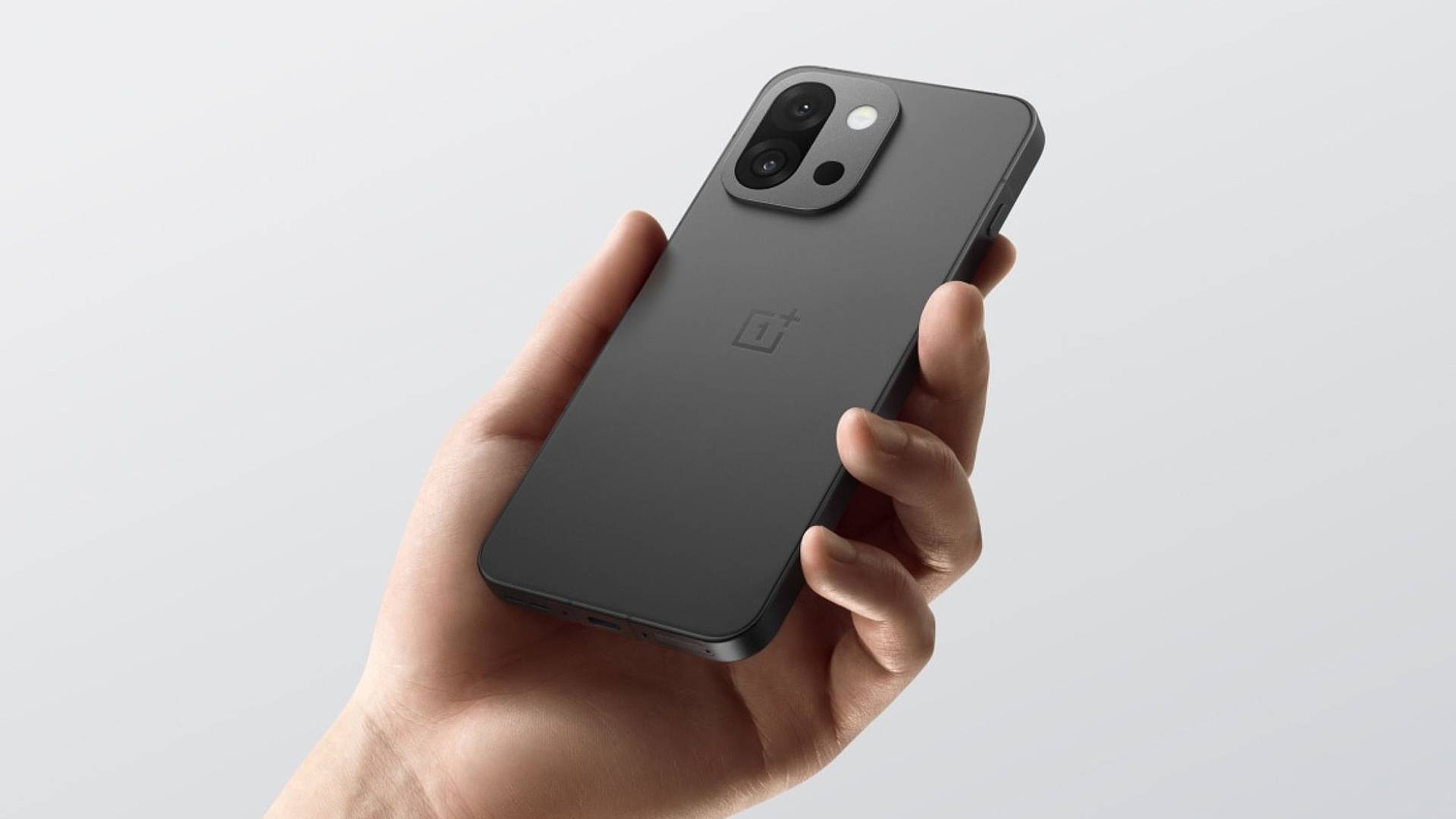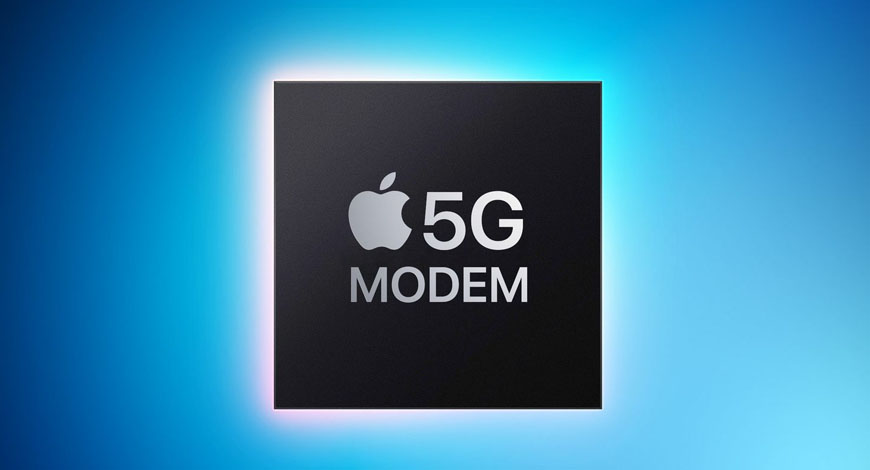Top Trending Gadgets News & Highlights


OnePlus 15 to Launch with 165Hz Display and Snapdragon 8 Gen 5 Elite Chip
OnePlus has officially confirmed that its upcoming flagship, the OnePlus 15, will debut with a super-smooth 165Hz display — the highest refresh rate ever seen on a OnePlus device. Designed for an ultra-responsive experience, this upgrade is expected to benefit gamers and everyday users alike, making scrolling, animations, and gameplay feel faster and more fluid than ever. Under the hood, the OnePlus 15 will be powered by Qualcomm’s next-gen Snapdragon 8 Gen 5 Elite chipset, promising significant boosts in performance, AI processing, and power efficiency. While full specs are still under wraps, this combination of display and silicon signals OnePlus’s continued push to stay at the forefront of premium Android smartphones. With an official launch expected in the coming months, the OnePlus 15 is shaping up to be a major contender in the flagship space. More details — including camera upgrades and software features — are likely to surface soon.
Published 25 Sep 2025 05:06 PM


In response to growing user safety concerns, OpenAI will introduce "teen-friendly" ChatGPT.
In light of the ongoing discussion and controversy about the impact of AI chatbots on youth mental health, OpenAI has announced that it is developing a "different ChatGPT experience" tailored to teens that will be released later this year.OpenAI has said that it is developing a "different ChatGPT experience" tailored for teens that will be released later this year, amid ongoing discussions and debates over the impact of AI chatbots on youth mental health.A number of important policy changes have been published by OpenAI, the company that created the popular ChatGPT, with the goal of improving user safety for its youngest users. The action was taken in the midst of growing criticism and a lawsuit brought by the family of a 16-year-old who committed suicide, claiming the AI chatbot was responsible for his demise. Under the new precautions, users under the age of eighteen will automatically activate a "teen-friendly" version of ChatGPT. Stricter content filters will be included in this version to block sensitive subjects including self-harm conversations and explicit sexual material. "Safety ahead of privacy and freedom for teens," according to OpenAI CEO Sam Altman, is a significant philosophical shift in the company's approach to AI ethics.Highlights of the New Teen Safety Plan: Age Forecast Technology: Based on a user's interaction patterns, OpenAI is creating a system to determine the user's age. The safer, under-18 experience will be used by default if the system is unsure.
Published 17 Sep 2025 04:48 PM


Activist Jarange: "Give Marathas reservation within the legal framework by Aug. 26 or face agitation."
Manoj Jarange, an activist, stated on Monday that if the government does not declare Maratha reservation "within the legal framework" by Tuesday, he will go on to Mumbai to start an agitation.He stated that he has no interest in traveling to Mumbai for a "indefinite hunger strike," which he said would be a nonviolent protest, if the demand is met by Tuesday.Jarange has called for a protest to begin on August 29 in Mumbai's Azad Maidan, calling for the Maratha community to be given preference in government employment and education under the Other Backward Classes (OBC) category. He has been leading the push to recognize all Marathas as Kunbis, an agrarian caste that falls under the OBC category, so that they can be given preference in government employment and education.In order to demonstrate the Marathas' Kunbi identity, the activist has emphasized the community's need for the application of historical records, such as the Bombay, Satara, and Hyderabad gazettes."Give us reservation that fits in the legal framework," Jarange stated during a press conference held in the Jalna district's Antarwali Sarati hamlet, from which he intends to depart for the agitation on August 27. He claimed that Chief Minister Devendra Fadnavis is purposefully adopting a "stubborn stand". 29 castes were been added to the OBC category by the government. According to the activist, this is akin to inciting the Maratha community. "Today and tomorrow belong to the government. Give us our reservation; we don't want to travel to Mumbai," he remarked.Jarange has been demanding the quota under the OBC category, despite the state government's announcement last year of a 10% reservation for the Maratha community under a different category. "A quota ought to be granted to the Maratha group since they have records of Kunbis. We don't want the 10% reservation to be canceled at any time," he stated. He stated, "We will also stand with him if reservation is given," if the chief minister believes that the OBC community supports the BJP.
Published 27 Aug 2025 04:27 PM


Google Rolls Out Pixel 10 Pro Fold, Prioritizing Practical Design
Google has introduced its latest foldable phone, the Pixel 10 Pro Fold, offering a refined design and performance upgrades. The device features a large 8-inch main display and a 6.4-inch cover screen, both designed to deliver a smooth user experience whether folded or open. Powered by Google's new Tensor G5 chip and 16 GB of RAM, the phone supports multitasking and demanding apps with ease. It includes a triple rear camera system—featuring wide, ultra-wide, and telephoto lenses—along with dual front cameras tailored for both folded and unfolded use. Google has also brought in subtle AI features across the phone, including smarter camera tools and on-device assistance, aiming to make everyday tasks feel more fluid without overcomplicating the experience. With a starting price of ₹1,72,999 in India, the Pixel 10 Pro Fold targets users who want a flexible form factor without sacrificing power or reliability. It marks Google's most polished attempt yet in the foldable space.
Published 21 Aug 2025 05:32 PM


Gadgets
Gadgets are of different type and there is all new advancements coming on regular basis be it Mobile phones or Laoptops of Consumer appliances. Everything is rapidely changing gloablly.


Apple extends agreement with Qualcomm for 5G modem chips until 2027: Report
Qualcomm CEO Cristiano Amon in an interview with CNBC has confirmed that Apple has agreed to extend its patent licence agreement related to 5G modem through March 2027. Last year, Apple extended the agreement for using Qualcomm’s 5G modems until 2026 which has now been extended further until 2027. Amon in his interview with CNBC said that after last year’s deal, Apple had an option to extend the deal further, which they have until March 2027. “We are very happy with the relationship with Apple right now, and we will continue to be supplying modems to them,” said Amon. Apple has been working on developing in-house modems since 2019 when the Cupertino-based company acquired the majority of Intel's smartphone modem business. However, there have been news reports alleging that Apple's attempt to produce in-house 5G modem chips has been hampered by major problems related to unrealistic goals, an inadequate understanding of the challenges involved, and unusable prototypes. Last month, Bloomberg’s Mark Gurman reported that Apple has shifted its attention to focus on the 6G cellular modem, while continuing to work on its first 5G modem chip. According to the analyst, Apple is racing to get its modem finished so it does not need to extend a contract with Qualcomm. He stated that the two companies have feuded over the years, and Apple really does not want to rely on Qualcomm for this vital iPhone component.Apple is yet to comment on the deal with Qualcomm, but with the new contract extension in place, it is highly likely that Apple’s attempt of producing in-house modem chips have been hindered further.


Xiaomi Rises to the Top as Smartphone Shipments to India Increase 25% YoY in Q4 2023: Counterpoint
According to a recent report by market research firm Counterpoint, smartphone shipments in India increased by a noteworthy 25 percent year-over-year (YoY) for the October–December period (Q4) in 2023. For the first time since Q3 2022, Xiaomi took the top spot during the quarter with 18% of the market share. The accomplishment was made possible by the company's entry into the low-cost 5G market with the Redmi 13C. Vivo held onto the second position, with Samsung falling to third after dominating the market for four straight quarters. Realme and Oppo, two Chinese smartphone manufacturers, took fourth and fifth place, respectively.One of the main drivers of the growth in the quarter, according to Counterpoint's report, was the 61 percent contribution from 5G smartphones. Notably, 24% of all smartphone shipments were made up of 5G phones priced between Rs. 10,000 and Rs. 15, 000. There was also a 51% increase in the premium smartphone market. Due to the release of the iPhone 15 series, Apple dominated the market with a 17 percent share. When comparing brands among the top five positions, Xiaomi emerged as the market leader with an 18% market share. For the second quarter in a row, Vivo maintained its impressive second place ranking and gained 17 percent of the smartphone market. Samsung only managed to secure 16.8% of the market share in third place, despite having a strong Q3 performance in which it led the industry. At number four with an 11 percent market share, Realme was present. With a 69 percent YoY growth, the company was the fastest-growing brand, according to the report. Oppo maintained its fifth-place position with a 10 percent share of the market. A different Counterpoint report noted that even with a strong quarter, the overall picture for smartphone shipments in India in 2023 stayed unchanged at 152 million units. The market research firm attributed the lack of growth to issues arising from macroeconomic turbulence, which led to low demand and an inventory build-up in the first half of 2023. The report also stated, "Better-than-expected holiday sales and 5G upgrades helped the market start recovering in the second half of the year." After capturing 18% of the market as a result of its impressive performance in the first three quarters, Samsung emerged as the market leader in 2023. Since 2017, this is the first time the South Korean tech giant has taken the lead in a calendar year. Notably, the business debuted the Galaxy Z Fold 5 and Galaxy Z Flip 5 in 2023 along with the Samsung Galaxy S23 series. Vivo, with a 17 percent share, continued to perform steadily and held the second position. The next three positions were occupied by Chinese smartphone brands Xiaomi, Realme, and Oppo, with respective market shares of 16.5%, 12%, and 10.5%. Although Apple did not place among the top five in shipments, it led the category when revenue crossed the ten million mark for the first time in a calendar year.


iPhone 16 may not feature any major design changes, bring new gen AI features
It's only been a few months since Apple unveiled the iPhone 15 series at its Wonderlust event in California. However, there have been a lot of rumours about the iPhone 16. The iPhone 16, like other iPhone models before it, is expected to debut in September this year.According to a recent post by analyst Ming-Chi Kuo on Medium, Apple is unlikely to make any major design changes to the iPhone 16 this year. Furthermore, the company is not expected to make any major generative AI-based changes to its ecosystem until at least the launch of iPhone 17 in 2025. “It is expected that Apple will not launch new iPhone models with significant design changes and the more comprehensive/differentiated GenAI ecosystem/applications until 2025 at the earliest. Until then, it will likely harm Apple’s iPhone shipment momentum and ecosystem growth." Kuo wrote in a blogpost. Notably, previous reports have suggested that the iPhone 16 may follow a similar camera design to the iPhone 12, which isn't likely to be a major design change and seems compatible with the usual changes Apple makes every year.Other rumours about the iPhone 16 include the addition of a dedicated camera button, which will make it easier to take videos and photos. The iPhone 16 Pro series is also expected to have a larger display than the current generation, with the iPhone 16 likely to have a 6.3-inch display and the 16 Pro a 6.9-inch display.Kuo's blog post noted that Apple is likely to see a decline in iPhone shipments in 2024, due to the increasing demand for AI and foldable smartphones. Meanwhile, Kuo added that the decline in iPhone shipments in China could be a direct result of competition from Huawei.


Room Heaters Under Rs 2,000 To Keep Your Home Warm And Cosy
As temperatures drop, keeping our homes warm and cosy becomes a top priority. Room heaters offer a convenient solution, providing warmth and comfort during chilly days and nights. However, finding an efficient and budget-friendly room heater can be challenging, especially with so many options available in the market. Fortunately, there are several affordable room heaters priced under Rsafety. 0 that effectively heat small to medium-sized rooms without breaking the bank.In this article, you can check out some of the best room heaters available under Rs 2,000, ensuring that you can stay snug and comfortable without exceeding your budget. Bajaj RHX-2 Halogen Heater: The Bajaj RHX-2 halogen heater comes with two halogen tubes and high-quality reflectors to provide consistent and effective heating. It offers two heat settings, 400W and 800W, allowing users to adjust the temperature according to their preference. Moreover, it includes a sturdy mesh grill for hand safety from direct heat exposure, while its robust outer body is constructed from durable ABS material to ensure longevity.RR Calid Halogen Room Heater 1200 W: The room heater functions silently, delivering ample warmth without producing any noise. Its 180-degree oscillation ensures uniform heat dispersion across the room by moving from side to side, effectively covering a larger area. Additionally, the heater includes tip-over protection, ensuring automatic shutdown if accidentally knocked over for added safety.Crompton Insta Comfy 800 Watt Room Heater: The heater features a high-quality plastic body that remains cool even during operation. Its advanced Quartz tubes heat up rapidly, ensuring faster dispersion of warmth. Moreover, the inclusion of two advanced quartz tubes, each with a power of 400 W, enables you to adjust the heat level according to your preference.


From February 1, You Can Send More Money Through IMPS: Key Details
The National Payments Corporation of India (NPCI) announced new changes for the Immediate Payment Service (IMPS) online bank transaction system in October 2023. As per NPCI’s circular shared in October, customers will be able to transfer up to Rs 5 lakh between bank accounts without adding a beneficiary starting February 1. The regulatory body has also asked all members to comply with the directive for initiating and accepting fund transfers via mobile number and bank name on all IMPS channels by January 31.What is IMPSIMPS is a 24x7 instant domestic funds transfer system. This online bank account transfer system has played a crucial role in transforming the financial landscape of India. To ensure both accuracy and speed, it facilitates real-time fund transfers with a deferred net settlement between banks. How this will help usersWith the new changes implemented, users will soon be able to transfer up to Rs 5 lakh using IMPS. For such transactions, users won’t need to input recipient details like mobile numbers, bank account names, account numbers or IFSC codes.The recent update is set to eliminate the need for users to input tedious beneficiary details during transactions. Users will be able to execute fund transfers with a simplified process that only requires the recipient's mobile number and bank name.


Reliance Jio Urges Government to Frame Policy to Shut Down 2G and 3G Services
Reliance Jio, in response to a consulting paper published by the Telecom Regulatory Authority of India (TRAI), titled Digital Transformation through 5G Ecosystem, suggested that the government should frame a policy to shut down the 2G and 3G networks in India and move the existing users to 4G and 5G networks. In a separate response, Vodafone Idea (Vi) also made the same suggestion and highlighted that the existence of such barriers lead to a digital divide and impacts the ecosystem for 5G use cases.The regulatory body sought opinions on the barriers to the development of the ecosystem for 5G use cases, which need to be addressed and the possible policy and regulatory interventions that can overcome them. Responding to this, Reliance Jio stated, “The Government should come out with a policy and glidepath for closing down the 2G and 3G networks completely so that unnecessary network costs should be avoided, and all customers can be migrated to 4G and 5G services.” The telecom operator added that this will also boost the developing ecosystem to 5G use cases. Separately, Vodafone Idea also submitted its suggestion highlighting a similar measure. “The inability of users to switch to smartphones on account of the cost of these devices also leads to the users continuing on older technology and hence, not using digital services and most likely ending up being not updated on latest digital technologies and services,” it added. The two major issues with shifting users to a higher network bandwidth include the abundance of phones used in India that are only 2G/3G capable, and the pricing of the 4G and 5G enabled smartphones that might be unaffordable for the rural and remote population of the country. Vodafone Idea highlighted the issue as well and stated that the cost of smartphones for low-income groups is a very big challenge. Reliance Jio also underlined the necessity for the availability and allocation of a “massive amount” of spectrum bands to better implement a robust 5G connectivity. To solve this, the telecom operator urged that the 6GHz band, full C-Band, and 28GHz (on a flexible use basis) should also be auctioned, along with the planned auction of the E-Band and V-Band spectrum.


Xiaomi 15 Series Tipped to Run on Qualcomms Snapdragon 8 Gen 4 SoC
Xiaomi 14 series with Snapdragon 8 Gen 3 SoC and HyperOS operating system was launched in Chinese markets in October last year. They are yet to make their India debut, but ahead of it, rumours about the next-generation flagship smartphones from Xiaomi have already started surfacing online. The Xiaomi 15 series is tipped to be powered by next-generation Qualcomm flagship processor. The Xiaomi 15 and Xiaomi 15 Pro are said to go official in September. Tipster Smart Pikachu (translated from Chinese) on Weibo claimed that the Xiaomi 15 series will be equipped with Qualcomm's unannounced Snapdragon 8 Gen 4 SoC. The displays of the purported devices are said to offer a 1.5K resolution. The Xiaomi 14 series was the first handset to feature Snapdragon 8 Gen 3 SoC. Previous leaks suggested that mass production of the Xiaomi 15 lineup will kick off in September. The regular model is expected to retain a flat display and have the same screen size as the Xiaomi 14 and Xiaomi 13. The Xiaomi 15 Pro is rumoured to come with a slightly curved 2K display with 0.6 mm narrow bezels. Since there's no official announcement from Xiaomi about the 15 series yet, these details should be taken with a pinch of salt. Xiaomi's 14 and Xiaomi 14 Pro were launched in China in October. The price of Xiaomi 14 Pro starts at CNY 4,999 (roughly Rs. 56,500) for the 12GB + 256GB RAM and storage model whereas the Xiaomi 14 is priced at CNY 3,999 (roughly Rs. 50,000) for the 8GB + 256GB RAM and storage variant. There is no official word yet on their debut in markets outside China. The Snapdragon 8 Gen 3 SoC powers Xiaomi's 14 series. They run on Xiaomi's HyperOS interface and feature up to 16GB of RAM and up to 1TB of storage. They also have an IP68 rating for water and dust resistance. The Xiaomi 14 series has LTPO OLED displays with up to 2K resolution and 120Hz dynamic refresh rate. They have a Leica-tuned triple rear camera setup as well.


Samsung Galaxy S24 Ultra Review: The most feature packed flagship
Over the past couple of years, Samsung has consistently launched flagship devices at the beginning of the year, and these devices often maintain their top positions in the market throughout the year. The latest addition to this trend is the Samsung Galaxy S24 Ultra, unveiled at the global 'Galaxy Unpacked' event in San Jose. After using the device for the past 10 days, it has left a positive impression. The device is priced at ₹1,29,999, slightly higher than last year's S23 Ultra. But is it worth the investment? Let's delve into the details. I have hands-on experience with previous Ultra models, including the Note series, and the S24 Ultra has made significant advancements. Samsung has slimmed down the sides for this year's model, making it a delight to hold. The titanium frame adds a touch of sophistication, and the phone feels slightly lighter compared to last year's device. On the right edge, you'll find the power and volume buttons, while the bottom edge features the lone USB-C port and a slot for the S Pen. The S Pen employs the tried-and-tested push mechanism for easy ejection, making it convenient to grab even when not directly looking at the screen. Despite its lightweight feel, the stylus appears to be durable. The S Pen is very responsive to the S24 Ultra's display. I appreciate its versatility for note-taking, colouring, drawing, and the added functionality of using the S Pen button as a remote camera shutter. The phone features a 120 Hz adaptive refresh rate and a 6.80-inch touchscreen display, protected by Gorilla Glass Armor. Let’s just say the 6.8-inch 1440 x 3120 OLED screen is the centrepiece of the S24 Ultra. It is perfectly sharp and crisp and with the huge screen, the viewing experience is delightful. The display is exceptionally bright, providing no difficulty in reading emails and messages outdoors, even under direct sunlight. With a brightness of 2,600 nits, a 40% upgrade over the S23 Ultra, and the added protection of Gorilla Glass Armor with an effective anti-reflective coating, the S24 Ultra's screen ensures both durability and visual clarity.


Amazons video advertisement push aims to turn TVs into shopping carts
Amazon.com Inc., joining streaming peers like Netflix, Disney and Peacock, will start running ads on its US Prime Video service on Monday. Beside generating new revenue for its $50 billion-plus advertising business, the e-commerce giant is betting it can persuade viewers to shop from their televisions. For decades, TV commercials have inspired and influenced future buying decisions rather than impulse purchases, and that hasn’t changed in the streaming era. Flo from Progressive still dukes it out with Geico’s gecko to peddle car insurance. She’s just increasingly seen on YouTube or Hulu rather than NBC. Amazon has the potential to upend the status quo because it’s the world’s largest online retailer, with detailed shopping profiles on Prime Video viewers. The company has an unrivaled delivery network that can ship millions products to much of the US population in a day or less. That combination could make the living room TV screen more than a place to spotlight brands. It could compel people to make purchases via smartphones, remote controls or voice-activated devices. “Prime Video might be Amazon’s best hope to make shoppable TV actually happen,” said Sky Canaves, an analyst at Insider Intelligence in New York. “Shoppable video ads will be part of its strategy to get brands that are already selling products on Amazon to advertise on Prime Video.” Selling billions of dollars in advertising will be the easy part. Brands for years have been shifting their marketing budgets from traditional TV to streaming services, and Amazon is offering low rates to reach a US audience second only to Netflix Inc. But training viewers to use their televisions as shopping carts and compelling advertisers to rethink an 80-year-old format will take time and effort—and could well fail as it has so many times before. Prime subscribers will see commercials in movies and TV shows unless they choose to pay an extra $3 a month for an ad-free service. In an effort to avoid alienating viewers, Amazon plans to air fewer ads than linear television and other streaming providers. (The company prohibits election and alcohol commercials.) In part because the video service is included in a Prime subscription that offers speedy shipping, music and other perks, most viewers are expected to accept the ads without much protest. Bank of America analysts estimate that 70% of Prime subscribers will opt to watch commercials rather than pay the extra fee to avoid them.


Apple opens iPhone ecosystem in EU: What it means for consumers, developers
Apple has announced that it will bring changes to iOS, Safari browser, and the App Store in the European Union (EU) to comply with the Digital Markets Act (DMA). With the new changes, iPhone users in the EU will get access to third-party App marketplaces, ability to change default browser, and set preferred payment method other than Apple’s for in-app purchases. Apple said the new changes will be limited to the 27 EU member countries and will roll out with the iOS 17.4 update in March. Here is a roundup of the changes coming to Apple iPhone platformplatform. With the iOS 17.4 update, users in the EU will get the option to install apps from a third-party app stores that Apple is calling “alternative app marketplaces”. Users will be able to download alternative app stores from the respective developer’s website. Apple said, the alternate app marketplaces can install and support software on iOS devices, access data across a catalogue of apps, manage user’s purchases and subscriptions, and more. However, developers managing these app marketplaces would need to meet Apple’s “Notarization” requirements, like other iOS apps. Apple said notarization is its review system for apps that ensure that the iOS apps are free of known malware, viruses, or other security threats. It includes a combination of automated checks and human review. Notarized apps will undergo checks during installation to check for user’s authorisation. If the app fails to comply with the Notarization regulations, the app will be prevented from launching and new installations will be halted.With the update, users will be able to manage the list of allowed app stores and installed apps from settings. Removing a third party app store will prevent app installations and updates from the developer’s website. Users can also set a third-party app store as their default app installation source.


Tecno Spark 20 Key Specifications, Price Teased via Amazon Microsite Ahead of Debut
"Tecno Spark 20 is set to debut in India soon and the company has started to tease the key specifications of the smartphone via a microsite on Amazon. The firm has also suggested the price of the handset in India and its colour options. The Tecno Spark 20 will also be equipped with the company's Dynamic Port feature — an Android implementation of Apple's Dynamic Island on its latest iPhone models. It has an IP53 rating for dust and splash resistance. A microsite for the Tecno Spark 20 on Amazon claims that the handset will be priced under Rs. 10,499 as the company claims it will offer a set of specifications in that price segment. The phone will be available in Cyber White, Gravity Black, Magic Skin Blue, and Neon Gold colour options. The price of the Tecno Spark 20 is expected to be announced by the company in the coming days, when the phone is launched in the country. The microsite also teases some of the key specifications of the Tecno Spark 20. It will be equipped with a MediaTek Helio G85 chipset paired with 8GB of RAM and 256GB of inbuilt storage. The Tecno Spark 20 will also feature an LCD screen with a 90Hz refresh rate and the company's Dynamic Port feature for notifications and other animations, built around the selfie camera. According to the company, the Tecno Spark 20 will be equipped with a 50-megapixel rear camera and a 32-megapixel selfie camera. Both the rear and front-facing cameras are accompanied by an LED flash. The fingerprint and volume buttons are located on the right edge of the phone, while the SIM tray is found on the left edge.The handset will also feature a dedicated microSD card slot that allows the inbuilt storage to be expanded up to 1TB. It will have stereo speakers with DTS audio. The Tecno Spark 20 also features an IP53 rating for dust and splash resistance, according to the company. "


Infinix Smart 8 Pro With 50-Megapixel Camera, 5,000mAh Battery Launched
"Infinix Smart 8 Pro has been silently launched by the company. The latest addition to the Smart 8 series is equipped with a 50-megapixel rear camera and sports a 6.6-inch IPS LCD screen with a 90Hz refresh rate and a peak brightness of 500 nits. It is powered by a MediaTek Helio G36 SoC paired with up to 8GB of RAM and runs on Android 13 (Go edition). The handset packs a 5,000mAh battery that can be charged at 10W. While the company is yet to reveal the price of the Infinix Smart 8 Pro, the details of the smartphone published on Infinix's website confirm that the handset will be available with 4GB or 8GB of RAM, and 64GB or 128GB of inbuilt storage. It will go on sale in Galaxy White, Rainbow Blue, Shiny Gold, and Timber Black colour options. We can expect to hear more about pricing and availability of the handset in the coming days. The dual SIM (Nano) Infinix Smart 8 Pro runs on Android 13 (Go edition) out-of-the-box. It sports a 6.66-inch HD+ (720x1,612 pixels) IPS LCD screen with a 90Hz refresh rate and 500 nits of peak brightness. The phone is powered by a Mediatek Helio G36 chipset, paired with up to 8GB of LPDDR4x RAM. Infinix has equipped the Smart 8 Pro with a 50-megapixel rear camera with an f/1.85 aperture, along with an unspecified AI lens with an f/2.0 aperture that might be used to collect depth information. On the front, the phone has an 8-megapixel selfie camera. You get up to 128GB of storage on the Infinix Smart 8 Pro that can be expanded up to 2TB via a microSD card slot. Connectivity options on the handset include 4G LTE, Wi-Fi 5, Bluetooth 5, a USB Type-C port, and a 3.5mm audio jack. Sensors on board include a gyroscope, e-compass, accelerometer, ambient light sensor, and a proximity sensor. The phone is equipped with a side-mounted fingerprint sensor for biometric authentication. It packs a 5,000mAh battery with support for 10W wired charging. The Infinix Smart 8 Pro measures 163.60x75.60x8.5mm and weighs 189g."


Fossil exits smartwatch market, ceding ground to tech giants
American watchmaker Fossil Group has decided to stop producing smartwatches, ending its years-long endeavour of bringing stylish tech timepieces to the market. The company said on Friday that its latest Gen 6 watch using Google’s Wear OS software will be its final release in the smartwatch category. Fossil’s exit comes as the landscape has evolved, with tech giants like Google and Samsung taking over with their own branded devices. “We have made the strategic decision to exit the smartwatch business and redirect resources to our core strengths,” a spokesperson for the Texas-based firm told reporters. Fossil’s sub-brands like Michael Kors, Skagen, and Diesel will also discontinue smartwatches. The company said it will provide support for existing models for a few more years. Fossil was one of the few traditional watchmakers trying to adapt to the new smartwatch trend over the past decade, even as big players ignored the struggling Wear OS platform. But the category finally gained momentum in 2021 when Google and Samsung partnered on a major software update. Industry analysts say Fossil struggled to compete with the tech giants’ marketing power and resources. The company had not released a new smartwatch model since 2021, already signaling its retreat. Fossil provided a unique focus on fashionable design in the smartwatch space. With its exit, there is an opening for other players to fill the void in sleek, designer tech watches. For now, Fossil says it will concentrate on its traditional watches, jewelry and leather goods. Even as smartwatches go mainstream, old-school timepieces still make up the vast majority of Fossil’s business.


‘Hot garbage’ and ‘total farce:’ Apple’s new App Store policies trigger strong reactions
Apple recently announced changes to its App Store policies in Europe to comply with the EU’s Digital Markets Act. The new rules will allow sideloading and alternative app stores in Europe, as well as third-party payment systems. This has drawn mixed reactions from companies and developers who have long criticised Apple’s walled-garden approach. “We are still reviewing the technical details but are extremely disappointed with Apple’s proposed plan to restrict the newly-announced BrowserEngineKit to EU-specific apps,” Mozilla spokesperson Damiano DeMonte told The Verge. “The effect of this would be to force an independent browser like Firefox to build and maintain two separate browser implementations — a burden Apple themselves will not have to bear.” Mozilla argues that having to maintain an EU-only version of Firefox on iOS creates unnecessary complexity. “Apple’s proposals fail to give consumers viable choices by making it as painful as possible for others to provide competitive alternatives to Safari,” DeMonte added. “This is another example of Apple creating barriers to prevent true browser competition on iOS.”Music streaming service Spotify had harsh words for Apple’s plan. In a post on its website, Spotify said “As Apple has just shown the world, they don’t think the rules apply to them. Apple is nothing if not consistent. While they have behaved badly for years, this takes the level of arrogance to an entirely new place.”Spotify took particular issue with the new €0.50 fee Apple will charge developers for each annual install after 1 million downloads. “From our read of Apple’s proposal, a developer would have to pay this fee even if a user downloaded the app, never used it and forgot to delete it,” Spotify wrote. The post called the changes a “complete and total farce” and extortion. Spotify CEO Daniel Ek also stated with a post on X that the company cannot afford the new fees if it wants to be profitable.


Google Pixel 8, Pixel 8 Pro Get New Mint Colour Option; Available in Only 128GB Variant
Google Pixel 8 series has been launched in a new colourway. After teasing the new colour option last week, Google announced the availability of the Google Pixel 8 and the Pixel 8 Pro in a new Mint colour. This is the fourth colour option for both handsets. In October 2023, the Pixel 8 was launched in Hazel, Obsidian, and Rose colourways, whereas the Pixel 8 Pro was offered in Bay, Obsidian, and Porcelain colourways. The price of the new Mint colour is the same as other colour variants. Last week, Google posted a binary code along with a video of a mint green colour splash on the Pixel 8 Pro on its social media handles. The binary code translated to “fresh year, fresh drop,” hinting at the new colour option. Interestingly, the new colour option will only be available in the 128GB inbuilt storage variant for both Pixel 8 and Pixel 8 Pro. The higher storage variants will only be available in the original colour options. In India, the Mint colour option is only available on the vanilla Pixel 8. It can be purchased through Flipkart. The colour will be exclusive to the Google Store and Google Fi in the US. Those who have already purchased the Pixel 8 or the Pixel 8 Pro can still experience the new colourway, as Google also sells a Mint silicone case for both phones. Samsung Ties Up With Blinkit to Deliver Galaxy S24 Series in Select Cities Pixel 8 price in India starts at Rs. 75,999 for the 8GB RAM and 128GB inbuilt storage model and the Pixel 8 Pro starts at Rs. 1,06,999 with the 12GB RAM and 128GB inbuilt storage model. Google Pixel 8, Pixel 8 Pro specifications The Pixel 8 features a 6.2-inch full-HD+ OLED panel with a 120Hz refresh rate. Under the hood, it is powered by the 4nm Google Tensor G3 SoC. For optics, the smartphone sports a dual rear camera setup comprising a 50-megapixel primary sensor and a 12-megapixel ultra wide-angle camera. It carries a 10.5-megapixel camera on the front. The handset is backed by a 4,575mAh battery with support for 27W wired charging. In contrast, the Pixel 8 Pro features a 6.7-inch Quad-HD OLED display with a 120Hz refresh rate. Just like the base model, it also runs on the Google Tensor G3 chipset. The rear camera visor houses three sensors including a 50-megapixel primary camera, a 48-megapixel telephoto lens, and another 48-megapixel ultrawide camera. It is backed by a 5,050mAh battery with support for 30W wired charging.


Samsung Galaxy S24 Series to Be Available on Blinkit in Select Cities; Doorstep Delivery in 10 Minutes
Samsung Galaxy S24, Galaxy S24+, and Galaxy S24 Ultra were unveiled at the company's Galaxy Unpacked event last week. The latest flagships are currently up for pre-orders in India and are set to go on sale for the first time starting Wednesday, January 31. Ahead of the sale, Samsung has joined hands with hyper-local delivery company Blinkit to offer doorstep delivery of the Galaxy S24 series in select cities. The company is claimed to deliver new handsets to buyers within 10 minutes of receiving the order. Samsung, via a press release on Thursday (January 25), announced a tie-up with Blinkit to deliver its recently launched Galaxy S24 series in India. Customers in Bengaluru, Delhi-NCR, and Mumbai can order Galaxy S24 Ultra, Galaxy S24+, and Galaxy S24 smartphones on the instant delivery platform for doorstep delivery. The handsets will be delivered in less than 10 minutes of receiving the order, claims Blinkit. Meanwhile, other online retailers will take at least one day to deliver the handsets. Customers buying the Galaxy S24 series through the Blinkit app or website can avail of an instant cashback of Rs. 5,000 for payments made using HDFC Bank credit cards.Samsung's Galaxy AI Features Are Coming to These Older Devices: Report. The Galaxy S24 has a starting price tag of Rs. 79,999 for the base 8GB + 256GB variant, the Galaxy S24+ pricing starts at Rs. 99,999, and the Galaxy S24 Ultra has a starting price tag of Rs. 1,29,999. Samsung Galaxy S24 series run on Android 14-based One UI 6.1 and boasts Dynamic AMOLED 2X displays with up to 120Hz refresh rate. The Galaxy S24 packs 8GB of RAM, while the top-end Galaxy S24+ and Galaxy S24 Ultra offer 12GB of RAM. The Galaxy S24 Ultra runs on a tweaked version of the Snapdragon 8 Gen 3 SoC called "Snapdragon 8 Gen 3 SoC for Galaxy" in all regions. The India variants of Galaxy S24 and Galaxy S24+ smartphones have Exynos 2400 SoC under the hood. All three phones have IP68-rated dust- and water-resistant build. Samsung has equipped the Galaxy S24 Ultra with a quad camera setup led by a 200-megapixel primary camera. The regular models have triple rear cameras led by a 50-megapixel wide-angle camera. Samsung to Make Galaxy S24 Series in India for Local, Global Markets The Galaxy S24 Ultra comes with a 5,000mAh battery with support for 45W wired charging and Fast Wireless Charging 2.0 that offers 15W charging speeds. The Galaxy S24 and Galaxy S24+ pack 4,000mAh and 4,900mAh batteries with 25W and 45W wired charging support, respectively.


"Moto G24 Power India Launch Set for January 30; Teased to Offer 6,000mAh Battery, Helio G85 SoC "
Moto G24 Power is confirmed to be offered in Glacier Blue and Ink Blue colours. Moto G24 Power will be launched in India next week. The Chinese smartphone vendor has announced the arrival of a new Moto G series smartphone through its official social media handle. Motorola has also listed the Moto G24 Power on its India website revealing its design and specifications. It is confirmed to come in Glacier Blue and Ink Blue shades. The Moto G24 Power is teased to run on the MediaTek Helio G85 SoC. Dual rear cameras, a side-mounted fingerprint sensor, and a 6,000mAh battery are other key specifications of the handset. It will be sold via Flipkart. Motorola, through its official X account, confirmed that the Moto G24 Power will launch in India on January 30 and will go on sale via the company's official website, Flipkart, and other leading retail stores. The Lenovo subsidiary and Flipkart are both teasing the key specifications of the smartphone via a dedicated microsite. The price details of Moto G24 Power are not known at this moment. However, we can expect the handset to be priced at around Rs. 10,000. The Moto G24 Power is confirmed to be offered in Glacier Blue and Ink Blue colours. It is listed to run Android 14 and feature a 6.56-inch HD+ display with 90Hz refresh rate. The handset will be powered by a MediaTek Helio G85 SoC, coupled with up to 8GB of RAM and 128GB of storage. Moto G04, Moto G24 With 5,000mAh Battery Unveiled: See Price For optics, the Moto G24 Power gets a dual rear camera unit, comprising a 50-megapixel primary camera with Quad Pixel technology alongside a 2-megapixel macro shooter. Selfies and video chats will be handled by a 16-megapixel front camera. It gets stereo speakers supported by Dolby Atmos and a side-mounted fingerprint scanner for authentication. It will offer an IP52-rated build and pack a 6,000mAh battery with support for 33W fast charging.


Oppo, Nokia Resolve All Pending Patent Disputes via Cross Licencing Deal
Nokia said that Oppo will make royalty payments, along with catch-up payments to cover the periods of non-payment as part of the cross-licencing deal.Finnish telecom gear maker Nokia said on Wednesday it had signed a 5G patent cross-licencing deal with Chinese device maker Oppo that resolves patent litigation between the companies. Nokia has been involved in legal disputes with several Chinese tech firms, including Oppo and Vivo, over patent payments. The Finnish group recently signed an agreement with Chinese smartphone maker Honor."Under the agreement Oppo will make royalty payments, along with catch-up payments to cover the periods of non-payment," Nokia said in a statement. "The agreement resolves all pending patent litigation between the parties, in all jurisdictions."OP Corporate Bank analyst Kimmo Stenvall said investors had expected the parties to reach an agreement "sooner or later". Nokia' shares were roughly flat at 1049 GMT (4:19pm IST).Inderes analyst Atte Riikola said it was good uncertainty was now lifted about the timing of the deal, after the process had taken longer than expected. Nokia in December warned it would not meet its financial outlook for 2023, saying talks over unspecified licence renewals would continue into this year.


















